By: Josh Sensiba
Introduction
The first thing I noticed when entering Plaza Fiesta was the arrangement of colors that define the exterior of the location. Plaza Fiesta’s logo, a sun defined by various bright shades of red and yellow, smiles down at customers as they approach (Figure 1). Surrounding the sun are the words, “Plaza Fiesta,” written in a dark shade of red. The backdrop is made up of faux blue tiles. The colors visible from the exterior as well as those indoors are the reasons that led to this study of color in the Plaza’s linguistic landscape.
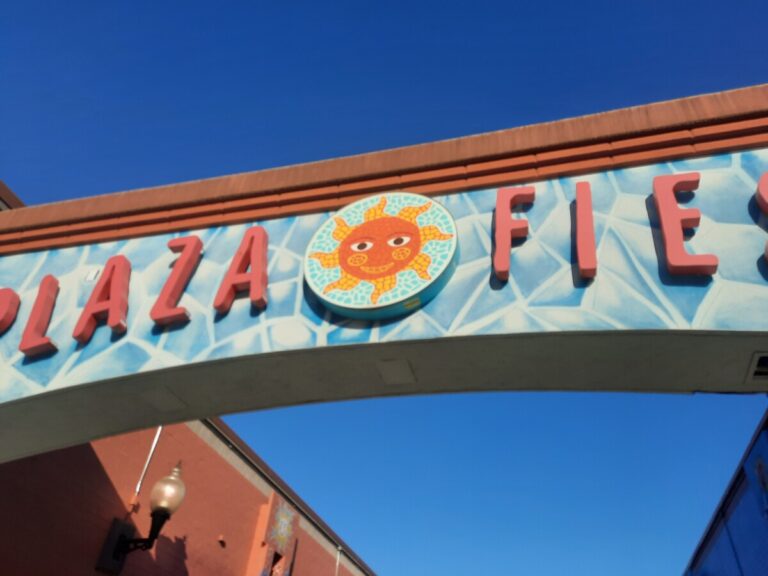
Plaza Fiesta is located on the multilingual and multicultural Buford Highway corridor in DeKalb County roughly 12 miles northeast of downtown Atlanta, Georgia at the border of the municipalities Brookhaven and Chamblee. According to the United States Census Bureau in 2019, 22.4% of Brookhaven’s population identifies as Hispanic, and 37.4% of Chamblee’s population identifies as Hispanic. The shopping center sees itself as an important hub for the diverse communities in the area. As stated on its website, “Plaza Fiesta has become the heart of one of metro Atlanta’s most diverse communities,” (El Riconcito, 2022). The mall frequently hosts events such as “carnivals, concerts, [and] celebrations of cultural heritage,” (El Riconcito, 2022). Although Plaza Fiesta describes itself as a “Latin mall,” the website reveals that its goal is to provide a space for the entire Atlanta community. Many of the products originate from Latin American countries and cover a wide range of categories such as huaraches, enchiladas, and quinceañera dresses, and both English and Spanish can be found throughout the store.
Research design
I obtained my data by traveling to Plaza Fiesta and taking 23 photographs that portrayed the diversity of the colors within the store. My goal was to have a comprehensive dataset which included all of the frequent colors I encountered within the store. I obtained my evidence by walking through the store three times. In the beginning, I took broad photos of the overall landscape. These photos included the colors of murals covering the walls, and the colors of the stalls themselves. After obtaining broad evidence, I walked through the store again looking for more specific things, such as small flags and the colors inside the stores as opposed to the color of the stores as a whole. In my third walkthrough, I simply tried to find any major evidence that I missed during my first two walkthroughs. In the end, I obtained 23 photos portraying various aspects of the color landscape of Plaza Fiesta.
Results
One of the first things I noticed within the store was the use of papel picado. Across the store are colorful tissue paper designs hanging from the ceiling (Figure 2). These tissue paper designs, referred to as papel picado, cover a very diverse range of colors and have elaborate designs. Blue, red, yellow, purple, and orange were all colors visible on the papel picado.
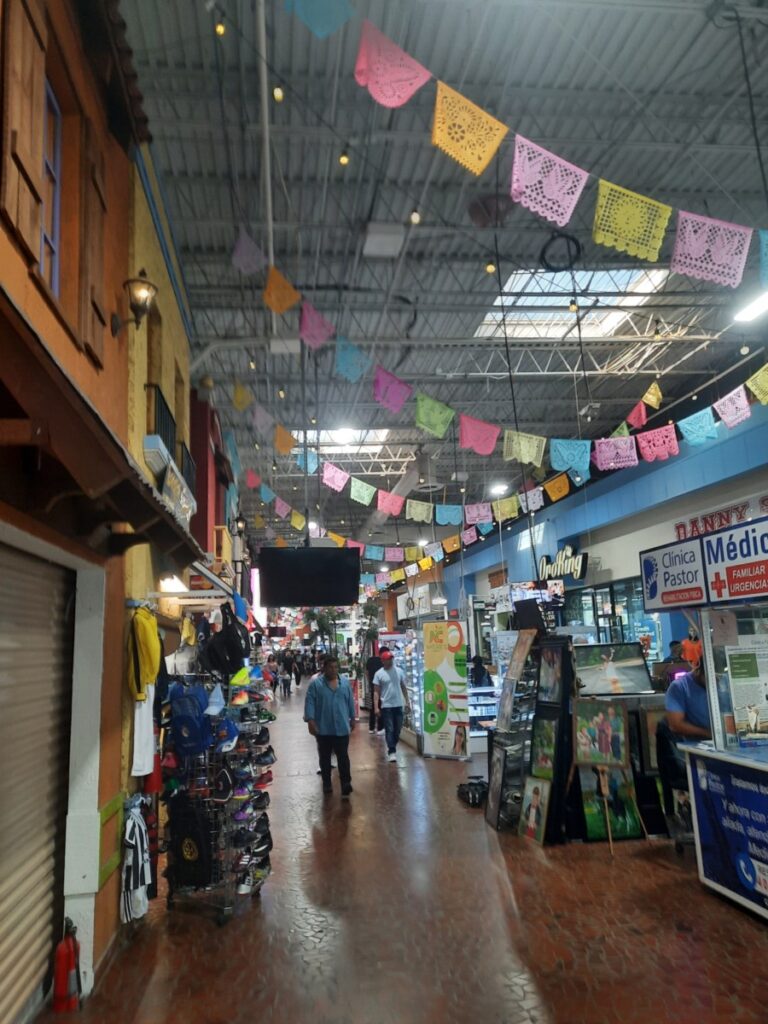
Along with this, I noticed the stalls were painted in a wide range of colors (Figure 3). Each stall has a separate color scheme, and all of them are designed to resemble buildings. Some of the colors I noticed include lime, brown, yellow, cyan, and red.
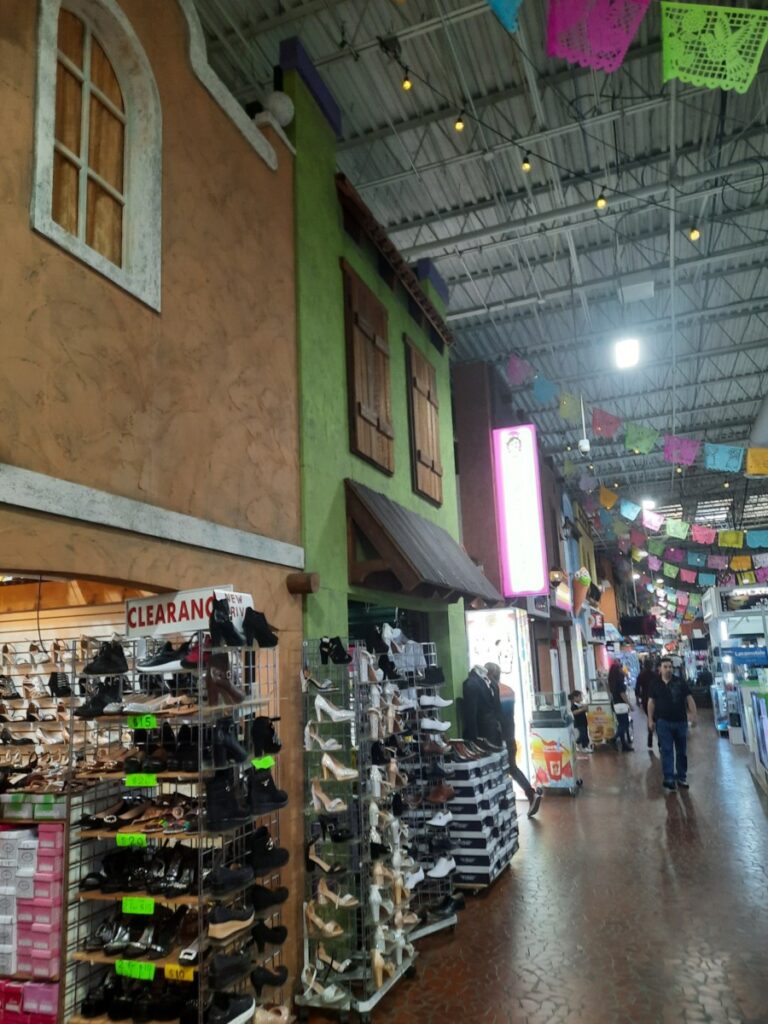
I also saw that many of the stores were painted with black lines to resemble cracks. There were also a few colorful murals on some of the walls of Plaza Fiesta. One of which is located near one of the entrances (Figure 4). Shades of blue, orange, red, green, and gray all blend together to create an explosion of color on the mural.
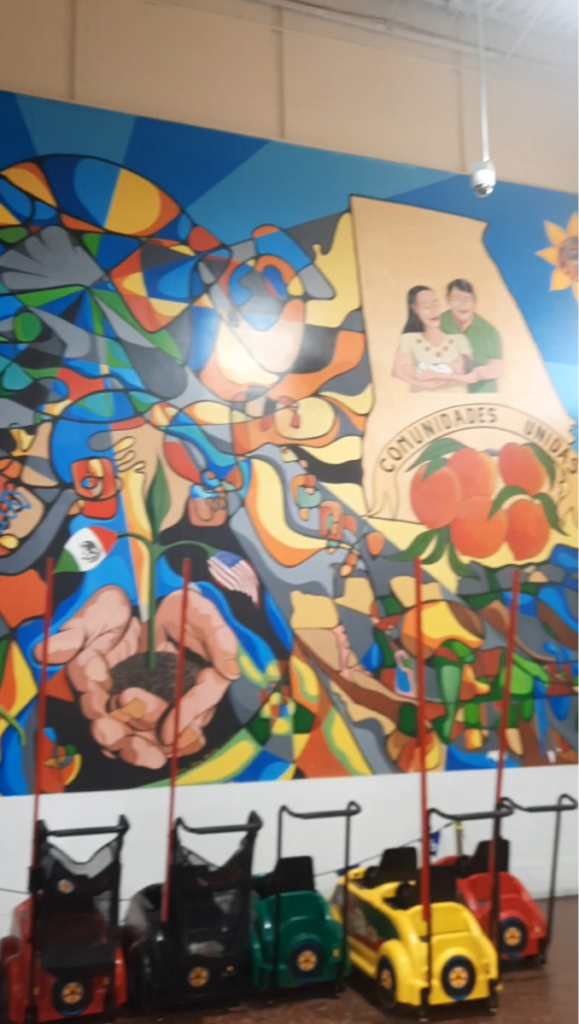
I also noticed a mural that was created to resemble stained glass (Figure 5). The colors on this mural are various shades of green, with the surrounding wall having colors such as blue, yellow, orange, and red.
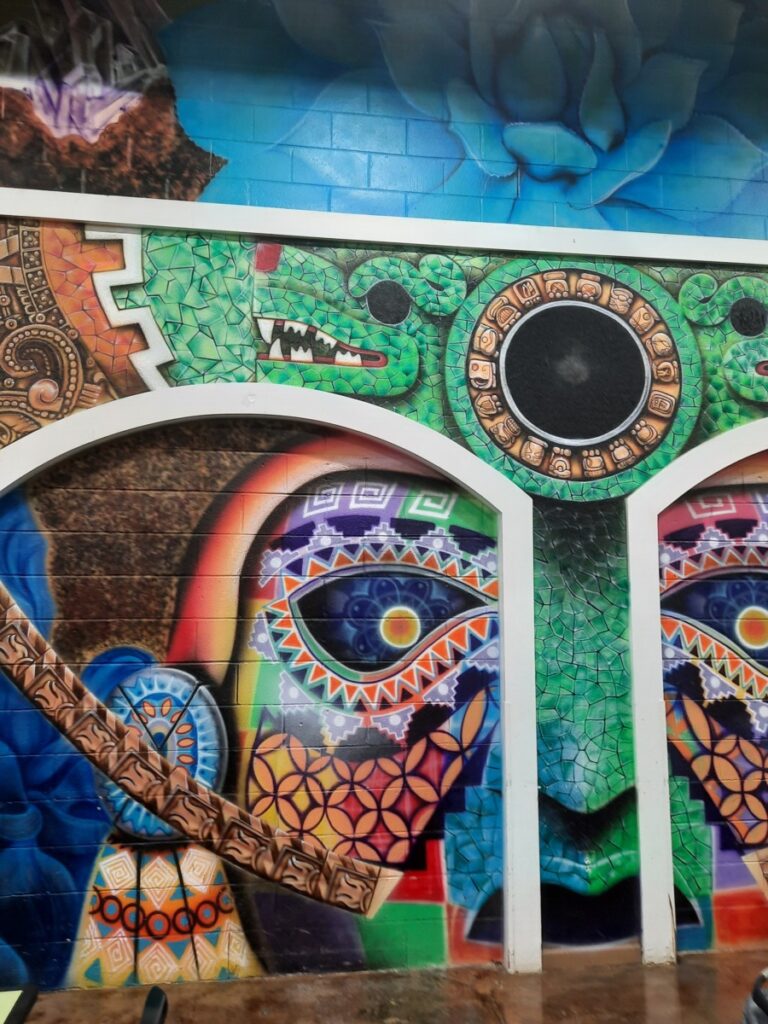
I also found instances of color being used to create a landscape within the specific stores of Plaza Fiesta. One of the first examples I noticed was through the colorful dresses located in many of the stores (Figure 6). There are walkways lined with colorful dresses. The assortment of colors of the dresses include orange, yellow, green, blue, and red.
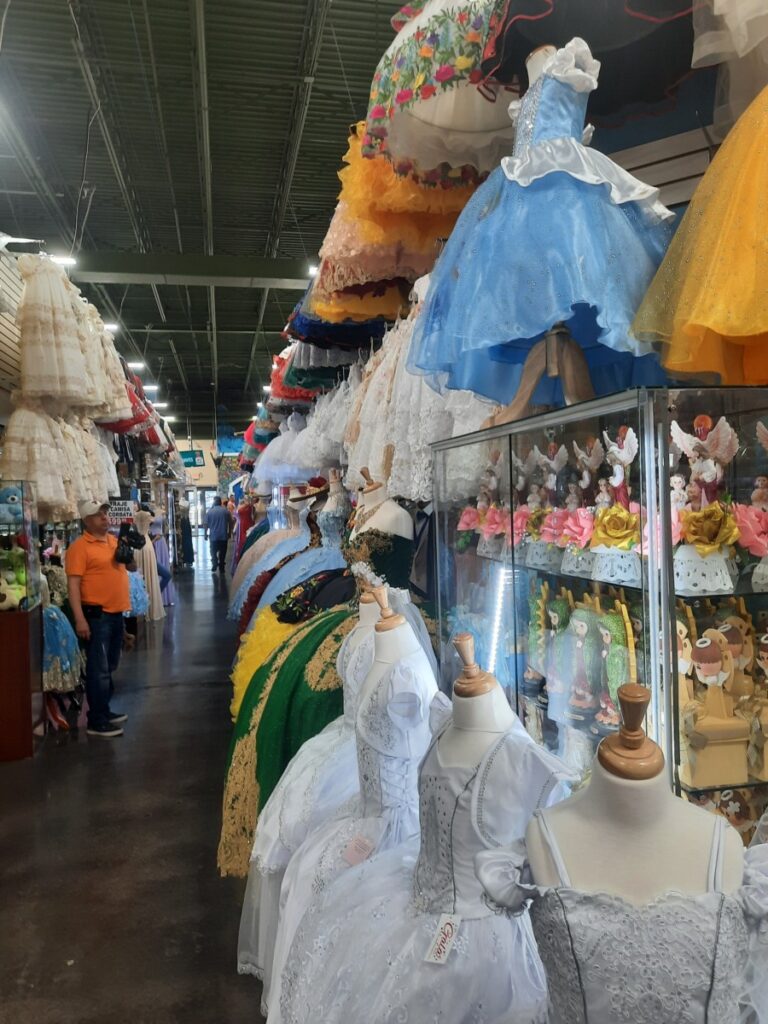
There were also flags being flown in various stores. These flags were predominantly Mexican; however, there were also flags from countries such as Argentina, Uruguay, and Nicaragua.
Analysis
The stores within Plaza Fiesta rely on color to assist in creating a unique landscape. Although there was a wide palette of colors used, many of the colors observed were bright shades of red, orange, and yellow. These colors not only make up the logo of Plaza Fiesta (Figure 1), but they also define the murals and walls of the building (Figures 3, 4, & 5). As Elliot and Maier (2012) state in their discussion of color theory, bright colors such as red, orange, and yellow have a measurable effect on people’s behavior, evoking feelings of warmth and happiness among the people who view them. It is therefore perhaps not surprising that a mall that stresses the importance of being welcoming to the diverse Atlanta community on their website uses red, orange, and yellow heavily throughout the mall. Moreover, the plethora of events held for the community showcases the dedication to creating a welcoming environment. The welcome begins already with the eye-catching logo (Figure 1) and continues with the colors of the stalls in the mall. Along with the use of bright colors such as red, yellow, and orange, the faded pastel colors, such as lime and brown (Figure 3), used on the stall walls add to the visual effect. Along with this, the walls are covered in subtle painted black lines that seem to resemble cracks as one might find on outdoor structures exposed to intense sunlight. The resulting effect is one that makes the exteriors of the stalls more accurately resemble exterior building facades. Although the stalls are very different in color, their common resemblance of exterior structures results in establishing a cohesive feel of a commercial district. In that sense, they reinforce a sense of community and unity no matter which stall a shopper ends up at. At the same time, the distinct colors of each stall creates an individuality of each business. Along with the buildings, the papel picado hanging above the main passageway of the mall brings significantly more color to the location (Figure 2). The papel picado includes many colors, such as yellow, lime, red, blue, and orange, and serves to brighten the shopping experience. Along with this, the papel picado is a clear reference to the culture of Mexico within the mall.
Color is a powerful tool in Plaza Fiesta. It was the first aspect of the store that caught my eye as I entered, and it works alongside aspects such as language, monuments, and signage to create a unique landscape. Without the colors of the stores, the murals, and the papel picado, Plaza Fiesta would lose one of its most powerful tools for making people feel welcome in the store. Further research into the impact of specific colors within Plaza Fiesta could include ethnographic work involving interviews with shoppers and workers in the mall to see what feelings are evoked by the colors used within the store and what role color plays in the shopping experience in the mall.
References
“El Rinconcito de Nuestro Pueblo”. Plaza Fiesta: El Rinconcito de Nuestro Pueblo. (2022).
Retrieved April 19, 2022, from https://plazafiesta.net/el-riconcito/
Elliot, A. J., & Maier, M. A. (2012). Color-in-context theory. Advances in experimental social
psychology (Vol. 45, pp. 61-125). Academic Press.
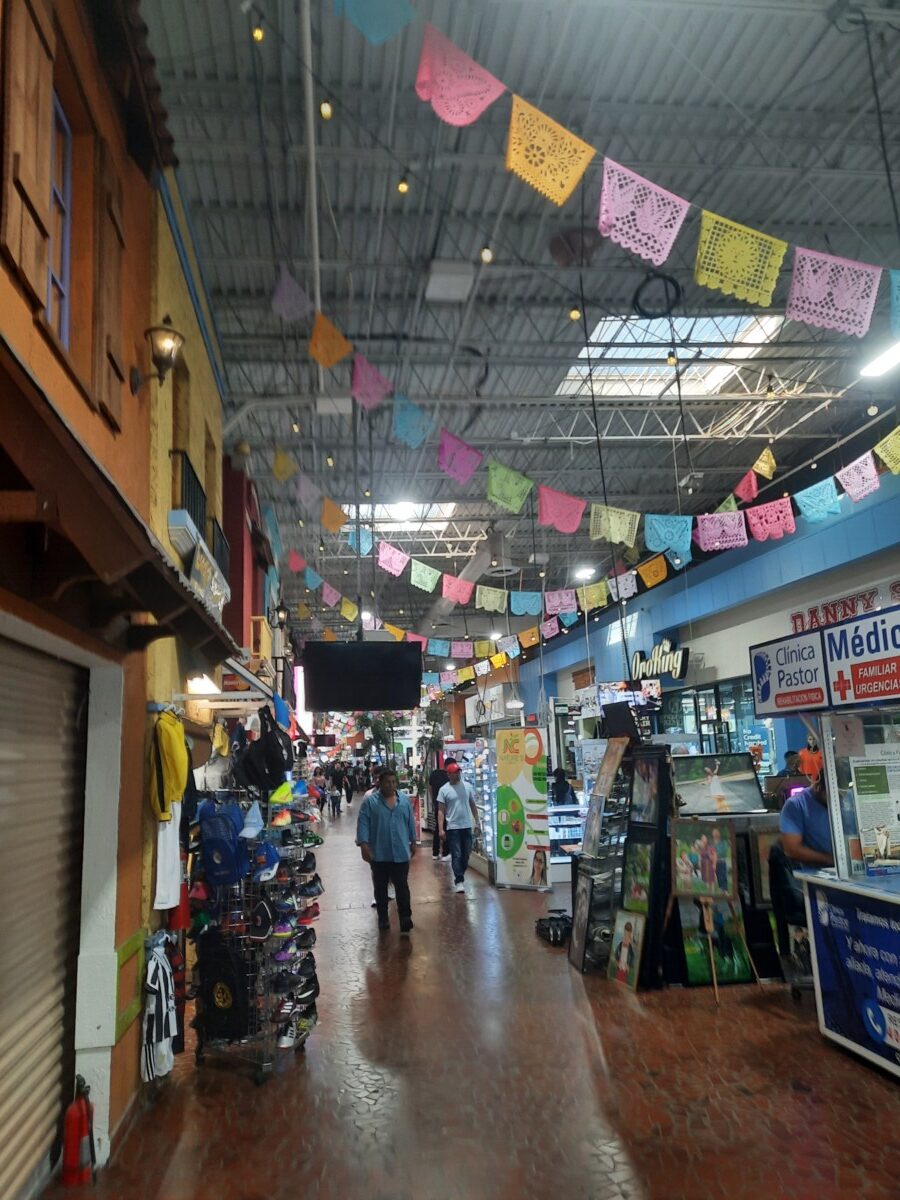


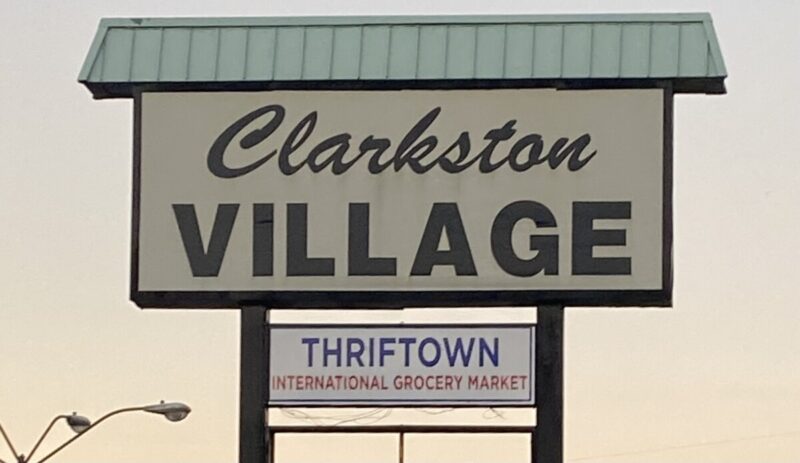
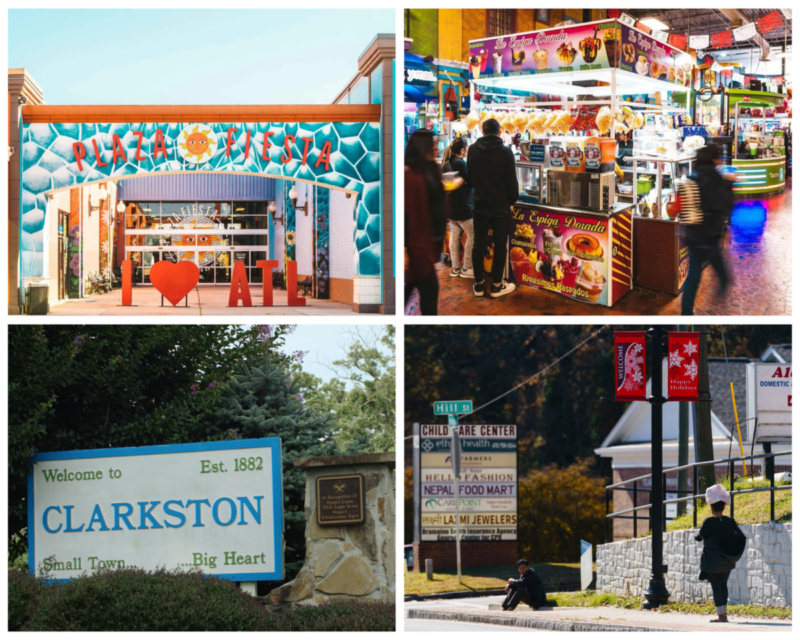
1 Comment
Add Yours →Growing up in a neighborhood where there are a lot of Hispanic stores that always have a lot of colors, I had never considered how important it is in creating a welcoming environment and in drawing in customers. I think Plaza Fiesta is a great location to study the impact of color and your analysis of the images you took is very clear. I agree with you that the papel picado is used to preserve the culture of Mexico within the mall. Appendix 1 is a mural that depicts Mayan symbols and designs and this mural along with others depicting Mexico’s culture could also be used to preserve the culture of Mexico. Your research is very well written!